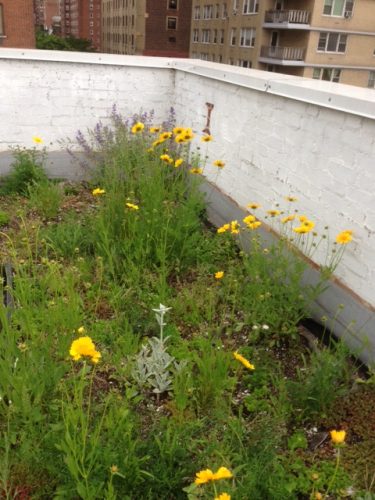The Green Roof Professional (GRP) certification system was developed by Green Roofs for Healthy Cities, a not-for-profit industry association working to promote and develop the market for the green roofs throughout North America.
In addition to providing a professional accreditation program, the organization facilitates the exchange of information, supports research, and promotes the establishment of effective public policies. The organization presents Awards of Excellence to celebrate innovative professionals and organizes the annual CitiesAlive conference to develop supportive policies.
Green Roofs for Healthy Cities has been committed to developing a professional accreditation program to legitimize green roof designers and provide education to fill knowledge gaps and improve the quality of work.
In 2004, Green Roofs for Healthy Cities developed its first training course, Green Roof Design 101. It has since added Green Roof Design and Installation 201, Green Roof Waterproofing and Drainage 301, and Green Roof Plants and Growing Media 401. The classes are available throughout North America on select dates. They are each full-day courses recommended as a part of the GRP training program.
The following half-day courses are also available, and count as continuing education credits:
· Advanced Green Roof Maintenance
· Introduction to Rooftop Urban Agriculture
· Green Walls 101: Systems Overview and Design (2nd Ed.)
· Integrated Water Management for Buildings and Sites
· Ecological Green Roof Design
· Green Infrastructure: Policies, Performance and Projects
· Green Roof Policy Development
Each course is accompanied by a course manual, which includes all the material on the accreditation exam.
Tuition for each full-day course is around $400 USD and is accompanied by a course manual. Each course manual can be purchased for $200 USD separately for those who choose not to take the classes in person. The accreditation exam itself consists of 100 multiple-choice questions and lasts 2 hours. It costs $500 USD to enroll and cannot be taken online, but is available at select times throughout the year.
In order to maintain GRP Certification, you must be a Green Roofs for Healthy Cities member ($160 USD annually), and renew your certification every 2 years. This involves completing a minimum of 16 continuing education credits, 8 of which must for GRHC related activities, and paying a renewal fee of $95 USD.
Interestingly, each continuing education course is listed at 3.5 units, effectively forcing members to increase the number of classes they must take to maintain their accreditation. Some of the half-day courses can be taken online for $125 USD as part of the Living Architecture Academy.

While the accreditation process may be designed to increase the reliability of green roof designers, Green Roofs for Healthy Cities is also cashing in on the deal. The North American green roof industry is growing by over 100% each year, drawing many more interested professionals and increasing public awareness. Much like LEED in their field, GRHC accreditation does require a financial commitment.
For standardization reasons, the green roof methods taught in the GRP program teaches industry standard techniques, usually involving brand name products. As a guerrilla green builder, EcoBrooklyn works with clients who seek the most cutting edge techniques. We reduce the waste of each project by maximizing the use of natural and salvaged materials.
This means we often go outside the envelope of normal green building techniques. We’ve tried all sorts of green roof experiments using alternative salvaged materials. We’ve used bottle crates as soil stabilization on sloped roofs. We once saved 6,000 used diapers and used them as the base for the growing media. The plants loved that one. And we almost never use the traditional palette of non-native sedum, preferring to use native plants and grasses.
